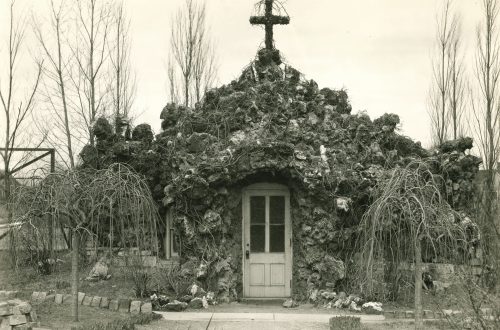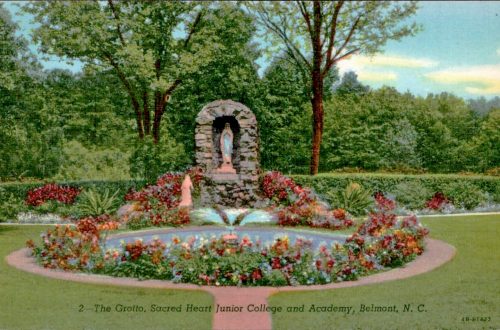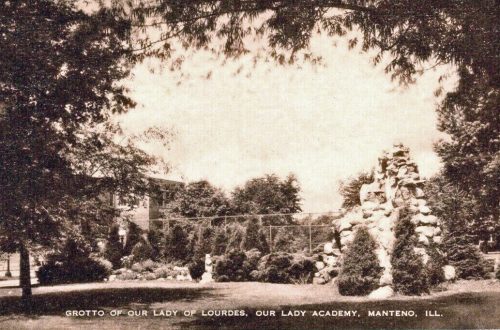Hammond, IN: St. Margaret’s Hospital
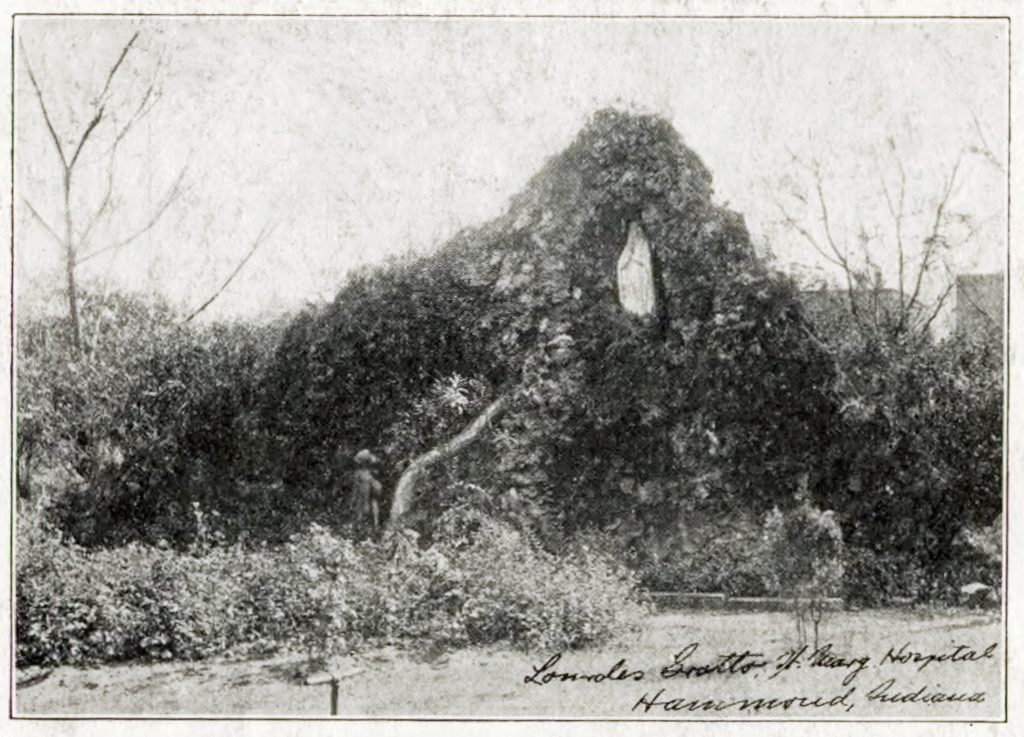
St. Margaret’s Hospital in Hammond, Indiana was established in 1898 by the Sisters of Francis of Perpetual Adoration, and a new hospital building was constructed in 1908. The following year as the new building was dedicated, it was announced in a news article of July 10, 1909 that “Landscape gardeners are now at work building driveways and walks, preparing the ground for a Lourdes grotto in the center.”
The following year, another newspaper article in the same paper announced the dedication of the new grotto:

DEDICATE LOURDES GROTTO Solemn Ceremonial Will Attend Dedication of Grotto by Sisters of St. Frances at St. Margaret’s Hospital; Replica of French Original The dedication of the Lourdes grotto at St. Margaret’s hospital will take place tomorrow afternoon, and promises to be an attractive event, especially in Catholic circles. The services in connection will be public, however, and the public is invited to attend. The hour set for the dedication is 4 o’clock. Rev. Father Suerth of the East Side will have charge of the dedicatory services and will deliver the address of the day. Another address will be made by Rev. John Kasprzykowski of St. Casimer’s church of the north side.
The grotto is located in the rear of the main building of the hospital, and is built so as to have a prominent place in years to come when all the wings of the hospital have been added. It was built by Edward Koenig of Chicago, a nephew of Father Koenig of Turkey Creek. He is recognized as one of the best landscape gardeners of the middlewest. He also built the grotto at Schererville, which was dedicated several years ago.
Copy of Original. The Lourdes grotto at St. Margaret’s hospital is an exact copy of the original in France, and is built of dripstone, which were shipped from Ohio for this purpose. These stones are set in cement, and because of the old gray color of the stone and the patches of moss in the crevices, the whole has an appearance as if planted there by nature. The statutory niche is occupied by an elegant life-size statue of Mary of the Immaculate Conception. This statue was donated by the William Kleigehe family.
The life-size statue of Bernadette, the little girl who, according to the Lourdes grotto saw the vision, was donated by the family of George Kussmaul. The statue of Bernadette represents her as kneeling looking toward the statue of Mary, and is placed at the foot of the grotto. Both statutes are made of cement with glazed surface and are weather proof.
A trickling stream of water finds its way through the crevices of the grotto in imitation of the stream of water in the original. The whole presents an artistic appearance and is the pride of the sisters, and the patients who are able to be out to enjoy the park-like grounds In the rear of the buildings.
The Times, May 28, 1910
Edward J. Koenig‘s c. 1917 brochure shows a photo of the grotto taken a few years after construction:
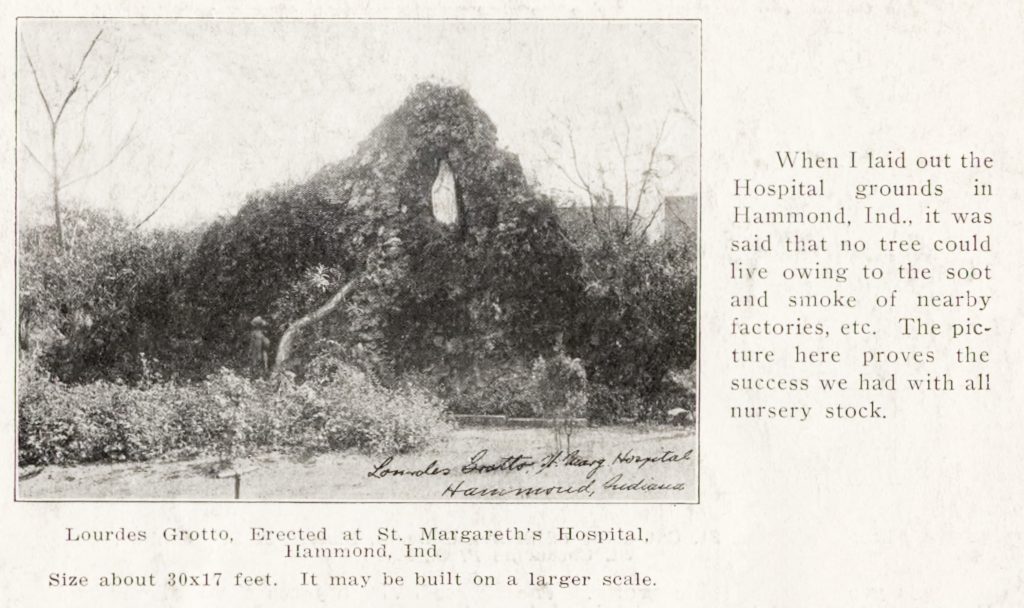
It’s not known how long the grotto remained on the hospital grounds through the many expansions it underwent during the twentieth century.


